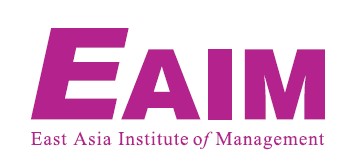In the current dynamic business environment, blending strong leadership with effective management is key to sustained success. Whether you’re launching a small-medium business or leading a well-established organisation, the ability to inspire your team while balancing visionary leadership with practical management is what sets top-performing businesses apart. By mastering these strategic skills, you can boost productivity, ignite innovation, and ensure your business doesn’t just navigate but thrives in an ever-evolving market.
Understanding the Difference: Leadership vs. Management
Leadership and management might seem similar, but they play different roles in a successful organisation. Leadership is about setting a clear direction, inspiring your team, and thinking about the long-term future. It’s about innovation and motivating others to achieve big goals. On the other hand, management is focused on turning those goals into reality by planning, organising, and making sure everything runs smoothly.
Key Takeaway: Organisations that excel in both leadership and management are more adaptable, resilient, and capable of sustaining competitive advantages in a fast-paced market.
The Evolving Role of Leadership: From Command-and-Control to Collaborative Innovation
The traditional command-and-control approach to leadership is becoming obsolete in a common business environment. Modern leaders are expected to be collaborative, empathetic, and forward-thinking. They need to foster a culture of innovation and inclusivity, where every team member feels empowered to contribute ideas and take initiative.
Resourceful Insight: There are some studies found that the importance of leadership styles that prioritize collaboration, inclusivity and diversity. This shift is driven by compelling evidence on the impact of diversity in the workplace.
McKinsey’s latest report, “Diversity Matters,” analyzed data from 366 public companies across Canada, Latin America, the United Kingdom, and the United States. The findings are significant: companies in the top quartile for racial and ethnic diversity are 35% more likely to achieve financial returns above their national industry medians. Similarly, those in the top quartile for gender diversity are 15% more likely to surpass their industry medians in financial performance.
Furthermore, companies with inclusive leadership are 1.8 times more likely to be change-ready and 1.7 times more likely to be innovation leaders in their market. This underscores the importance of fostering diverse and inclusive environments to drive creativity and competitive advantage.
Examples of successful diversity initiatives highlight this trend. For instance, technology leader Adobe has built its reputation on the principle that a positive and inclusive workplace is key to its success. CEO Shantanu Narayen emphasizes that “Adobe for All,” the company’s latest diversity initiative, is dedicated to empowering employees through educational benefits and a commitment to driving positive social change. Such initiatives demonstrate how leading companies are embracing diversity not just as a goal, but as a core element of their business strategy.
By adopting a collaborative approach and fostering inclusivity, leaders can leverage diverse perspectives to enhance innovation, boost productivity, and position their organisations for long-term success. This evolution in leadership style is crucial for thriving in an increasingly complex and competitive market.
Actionable Advice: Leaders should invest in continuous learning to keep up with technological advancements and develop digital literacy skills. Participating in workshops, online courses, or even pursuing executive education programmes can provide valuable insights into the latest leadership trends and technologies.
The Crucial Role of Management in Driving Business Success
Effective management is the backbone of any successful organisation. It’s not just about overseeing day-to-day operations but also about optimizing processes, managing resources efficiently, and ensuring that teams are working towards common objectives.
Strategic Tip: Implementing lean management techniques can significantly enhance operational efficiency. By focusing on eliminating waste, improving workflows, and continuously seeking ways to enhance productivity, managers can drive substantial improvements in both cost-effectiveness and output quality.
Additionally, management today requires a strong understanding of data analytics. Managers need to make data-driven decisions, from forecasting demand to managing inventory and analyzing team performance. This requires not only technical skills but also the ability to interpret data in a way that informs strategic decisions.
Pro Tip: Encourage your management team to undergo training in data analytics and business intelligence tools. This will enable them to make more informed decisions, leading to better outcomes for the organisation.
Bridging the Leadership-Management Gap: Building a Culture of Continuous Improvement
For organisations to thrive, it’s crucial to foster a culture that values both leadership and management. This means providing ongoing professional development opportunities, such as leadership training programmes, management certifications, and mentorship initiatives. By investing in the growth of your team, you ensure that they are equipped to handle the complexities of the modern business environment.
Learn from the Best with EAIM
At EAIM, our leadership and management programmes are designed to bridge the gap between theory and practice. Our curriculum is tailored to address the real-world challenges faced by today’s business leaders and managers. We offer specialized courses that cover everything from strategic leadership and change management to data-driven decision-making and operational excellence. Here are what you can expect:
- Tailored Leadership Programmes: EAIM offers customized leadership courses that focus on developing strategic thinking, decision-making, and innovation skills tailored to your industry needs.
- Practical Management Training: Our management training programmes are designed to equip you with practical tools and techniques for optimizing processes, managing resources, and leading teams effectively.
- Real-World Case Studies: Learn from real-world case studies that showcase successful leadership and management practices. This helps you apply proven strategies in your own business context.
- Workshops and Seminars: Participate in interactive workshops and seminars that cover the latest trends and challenges in leadership and management, ensuring you stay ahead of the curve.
- Mentorship Opportunities: Gain access to experienced mentors who can provide guidance, feedback, and support as you develop your leadership and management skills.
- Continuous Learning Resources: EAIM provides a range of online resources, including webinars, articles, and podcasts, to help you continue learning and growing in your leadership and management roles.
- Networking Opportunities: Connect with peers, industry leaders, and experts through our events and alumni network, expanding your professional circle and learning from others’ experiences.
- Executive Education Programmes: Explore our executive education programmes, which are designed to help seasoned professionals refine their leadership and management skills and stay competitive in their fields.
The Path to Organisational Success
In an era marked by rapid change and uncertainty, the ability to excel in both leadership and management is what will set your organisation apart. By embracing innovative leadership practices, implementing efficient management strategies, and fostering a culture of continuous improvement, you can navigate the complexities of today’s business world and drive long-term success.
The bottom line: Whether you’re an emerging leader or a seasoned executive, investing in your leadership and management skills is crucial. Explore EAIM’s executive education programmes to take the next step in your professional journey and equip yourself with the tools needed to lead and manage effectively in the modern business landscape.

